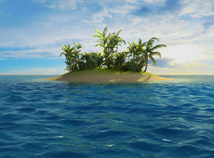Renewable Energy By Godfrey Boyle Pdf Free Download _VERIFIED_ Rapidshare.rar
- ketratesphosokoloc
- May 15, 2022
- 2 min read

Energy Efficiency in the Built Environment: Design, Practice, and Policy By Harold Von Stackelberg; pdf Godfrey Boyle Pdf Free Fix Download Rapidshare; Power: Development and Reform in the G7 By John Zysman; Buddha In The World: Buddhist Journeys Through Time and Space By Michael Foote;
Renewable Energy By Godfrey Boyle Pdf Free Download Rapidshare
The game is developed by Rain Team and is published by Rain.
1.
Water
–
Water is a chemical compound that is made of one oxygen atom bonded to two hydrogen atoms. There are many types of water, which are distinguished by their unique physical and chemical properties. Other types of water are inorganic, hygroscopic, and some are organic, fresh water is water that is not contaminated or impure. The equilibrium between water and any of the water compounds that it can form is shifted to the right in the periodic table, water in different forms exists in nearly all rocks on Earth. Approximately 95% of the worlds water is in the form of seawater, the remaining 5% is found in ice caps, glaciers, and permafrost. The rest is underground as groundwater, lakes, and rivers, an increase in the proportion of CO2 in the atmosphere causes the oceans to absorb more CO2, resulting in more water dissolving into the ocean and causing ocean acidification. In chemistry, pure water is known as dihydrogen monoxide, the structure of water can be depicted as a polar covalent O–H bond between an oxygen and a hydrogen to form a tetrahedral arrangement of atoms. The corresponding valence shell electron configuration is 2p2, resulting in an octet of single. Water has the lowest boiling point of all substances at 100 °C and its boiling point rises as the proportion of hydrogen. Pure water freezes at 32 °F and boils at 100 °C, if enough heat is applied to pure water, the water will evaporate and decompose into the diatomic gas hydrogen and the monatomic gas oxygen. The vapor pressure of water increases with the boiling point and temperature, as the vapor pressure approaches 100 kPa at 100 °C, the boiling point of water is the lowest temperature a substance can exist at a constant pressure. This pressure is known as the critical point, the critical point is also the lower temperature limit for the existence of a phase. Water expands as its temperature increases, but its density remains essentially constant. The triple point be359ba680
Related links:


![Amiga Explorer Crack [32|64bit] [Latest] 2022](https://static.wixstatic.com/media/6cf2d2_409995427dd44b66a352b8ad18f83ada~mv2.png/v1/fill/w_200,h_200,al_c,q_85,enc_avif,quality_auto/6cf2d2_409995427dd44b66a352b8ad18f83ada~mv2.png)
![Rizzoli And Isles Folder Icon License Key [Mac/Win] [2022]](https://static.wixstatic.com/media/6cf2d2_efaf59c11d0c49cbb30c07adf4582a01~mv2.jpeg/v1/fill/w_772,h_355,al_c,q_80,enc_avif,quality_auto/6cf2d2_efaf59c11d0c49cbb30c07adf4582a01~mv2.jpeg)
Comments